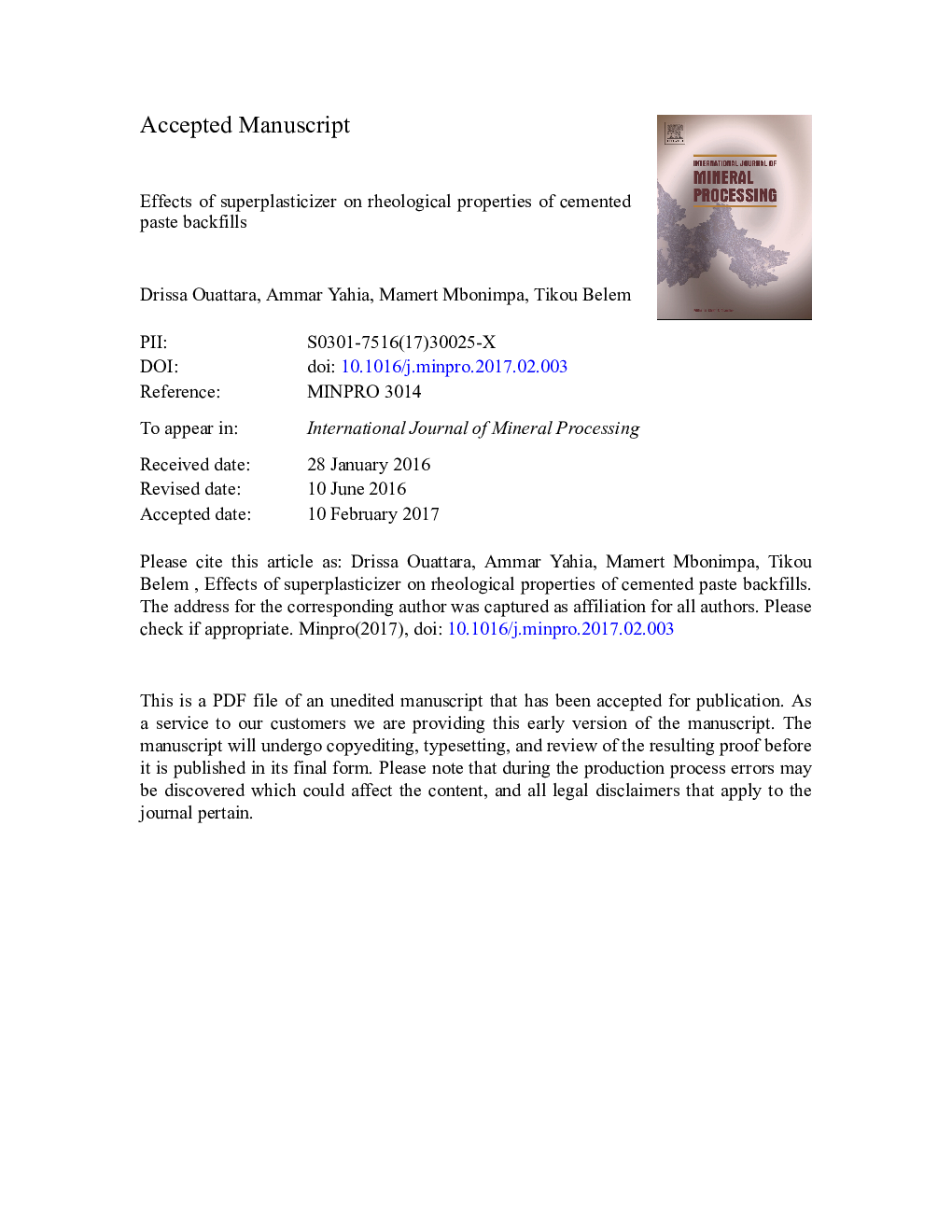| Article ID | Journal | Published Year | Pages | File Type |
|---|---|---|---|---|
| 4769417 | International Journal of Mineral Processing | 2017 | 45 Pages |
Abstract
The rheological properties of cemented paste backfill (CPB) affect the flow characteristics during transport for underground open stope filling. An experimental study was conducted to investigate the effects of two different types of polycarboxylate (PC)-based high-range water reducer (HRWR) admixtures, or superplasticizers (SP), called PC1 and PC2, on the rheological properties of CPB mixtures. For each PC type, dosages (ratio of the dry mass of PC to the dry mass of tailings) varying from 0.045% to 0.153% were assessed. The CPB mixtures were proportioned with 75, 77, and 80% solid content. A general use Portland cement (GU) and a blended binder (S-GU) were used. The S-GU binder is composed of 80% ground granulated blast furnace slag and 20% GU. A 4.5% binder content by dry mass of tailings was investigated. Test results showed that the use of PC2 at optimum dosage combined with S-GU binder resulted in better rheological properties of CPB mixtures with 75% solid content. For CPB with higher solid contents of 77% and 80%, the required PC2 dosages to obtain adequate rheological properties to facilitate transport were determined. A preliminary cost estimate for the HRWR required to ensure adequate CPB flow is presented.
Related Topics
Physical Sciences and Engineering
Chemical Engineering
Chemical Engineering (General)
Authors
Drissa Ouattara, Ammar Yahia, Mamert Mbonimpa, Tikou Belem,
